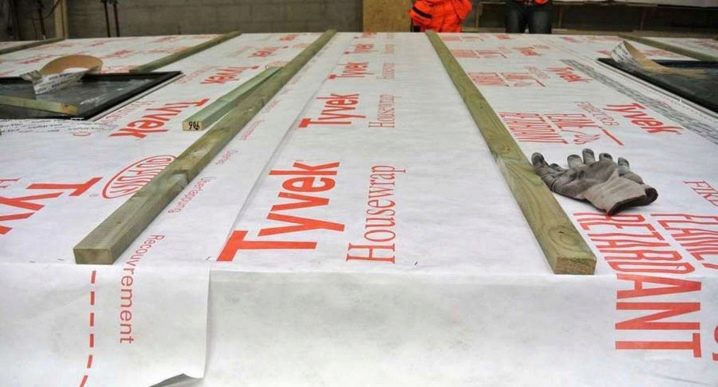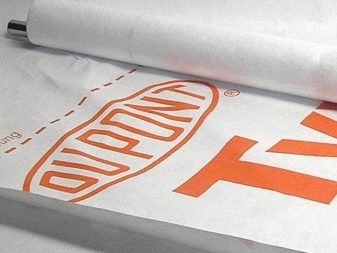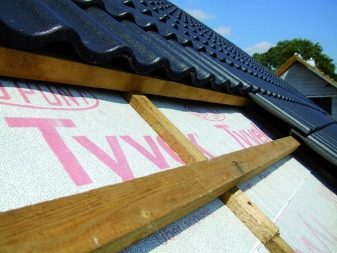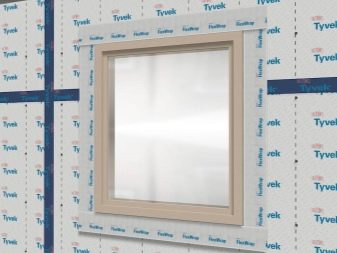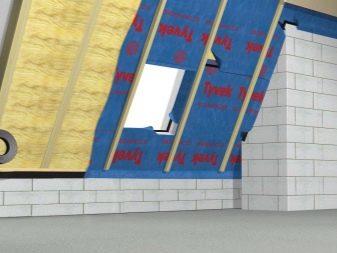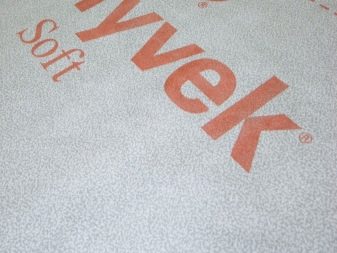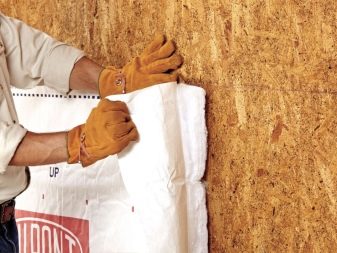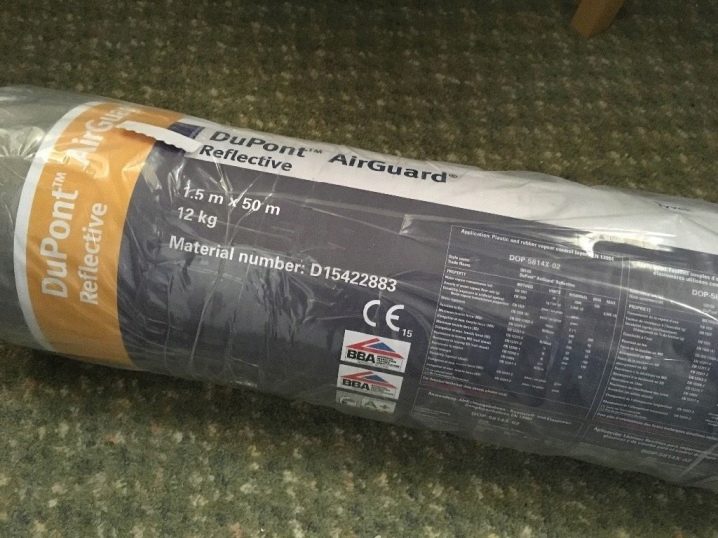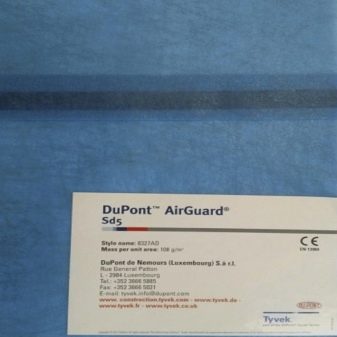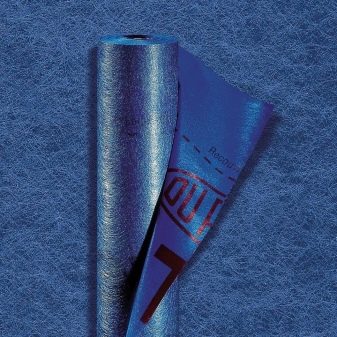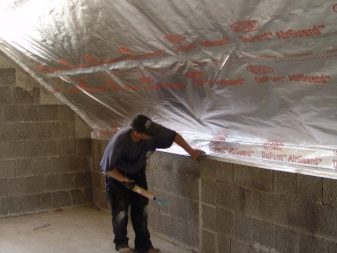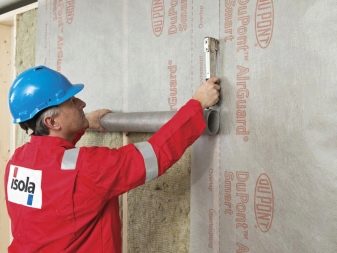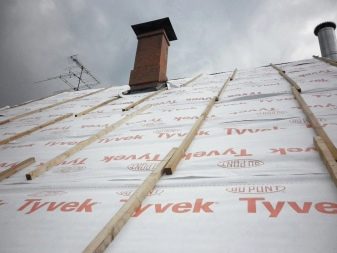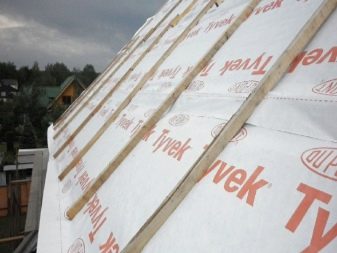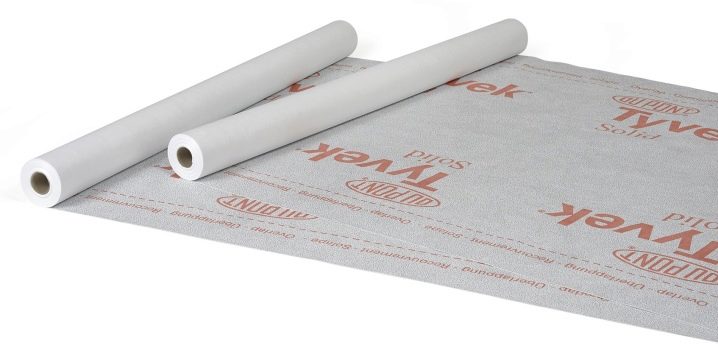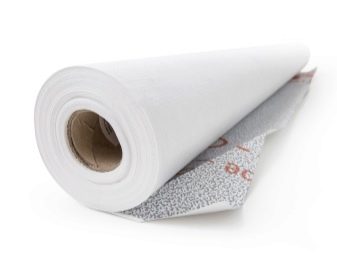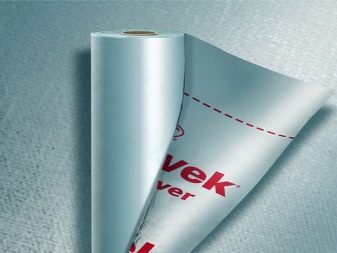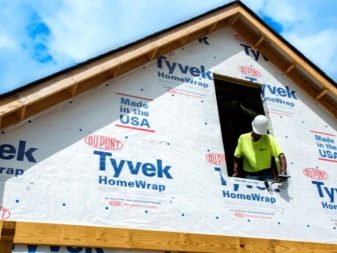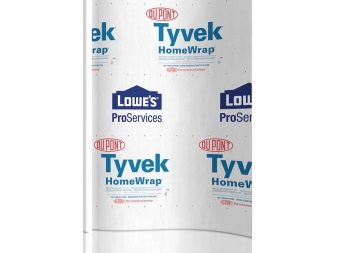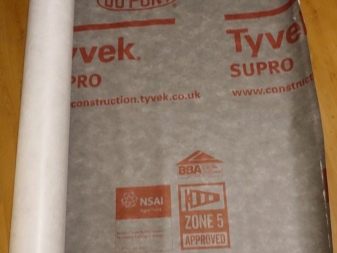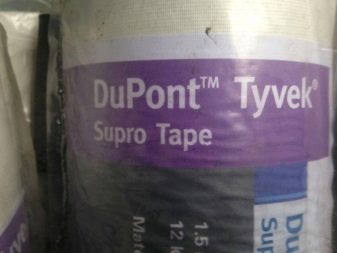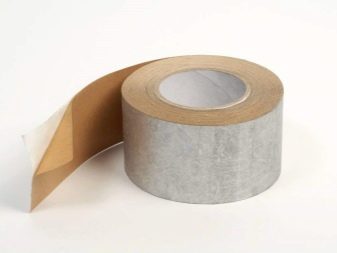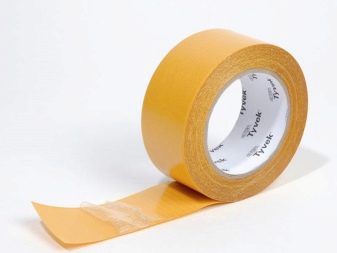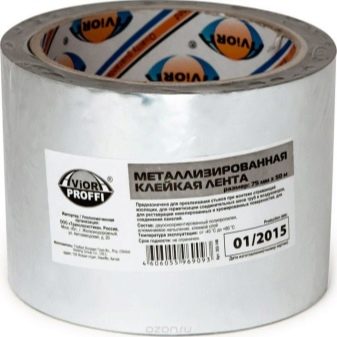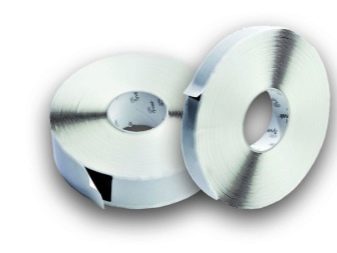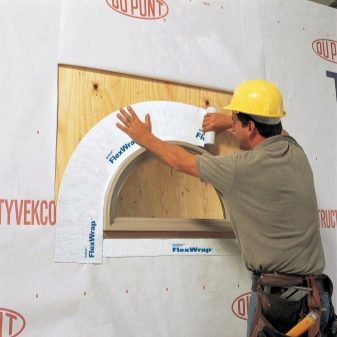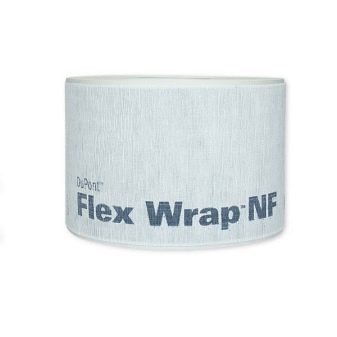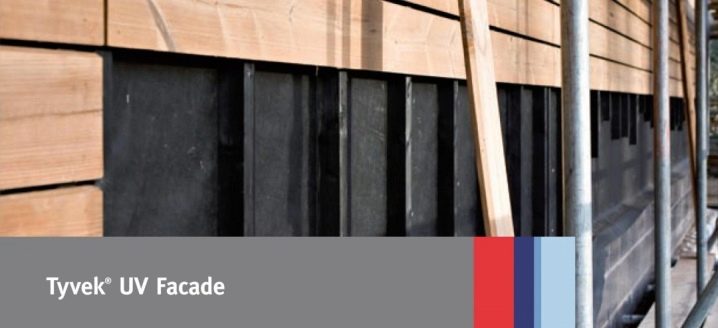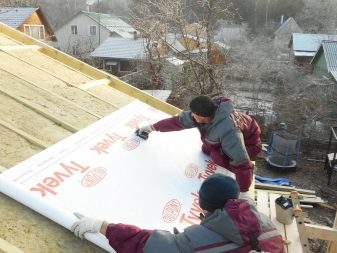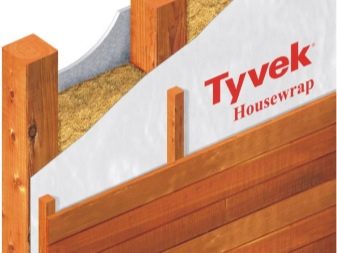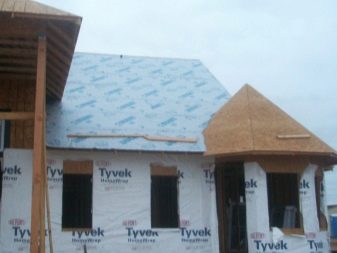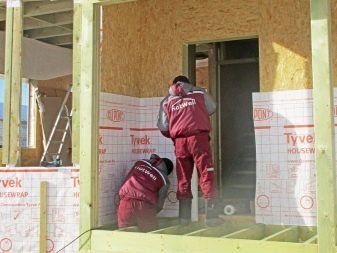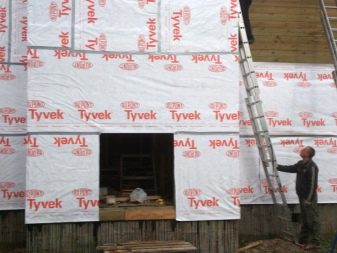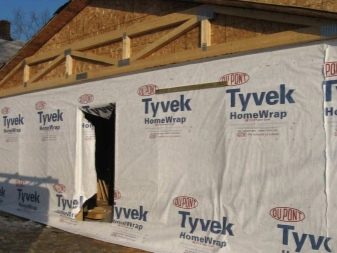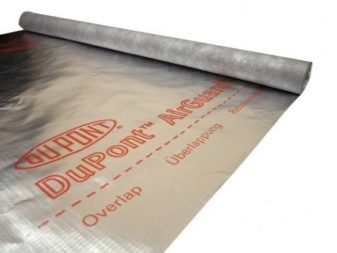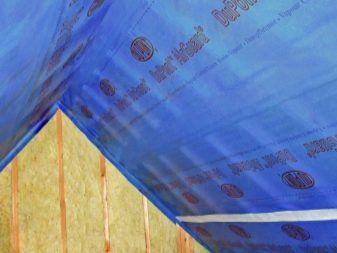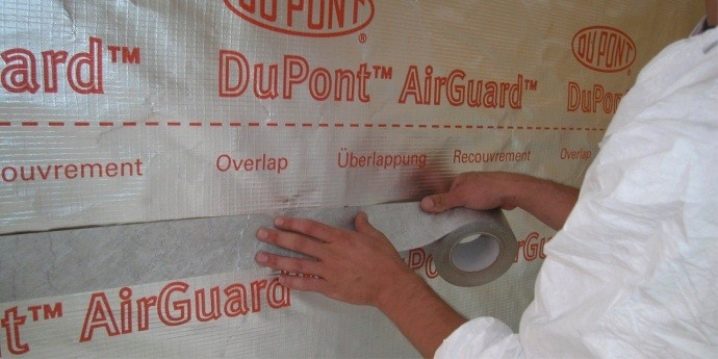Types of Insulation Tyvek from DuPont
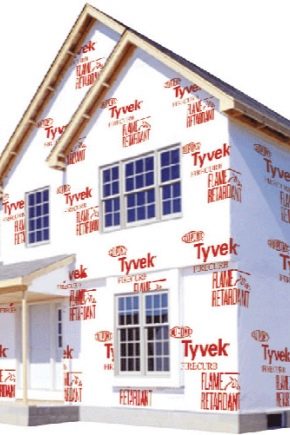
Its thermal performance, microclimate, and, ultimately, and durability of the structure depend on the correctness of hydroprotection and vapor barrier of the building. The most widespread in modern construction has received membrane insulation, and customer confidence - materials Tyvek.
Special features
Tyvek are hydro and vapor barrier membranes manufactured by the world famous DuPont brand specializing in the production of accessories for external and internal roof insulation. Today, this insulation is used for waterproofing floors, walls, facades, and it is also used as a windscreen.
The beginning of the company’s activity dates back to 1802. From the first days of its existence, the brand's products were distinguished by high quality, innovative solutions, a scientific approach and environmental friendliness.
At the heart of Tyvek's vapor barrier is a high density non-woven polyethylene structure. The material is characterized by controlled vapor permeability, due to which it is possible to remove moist air into the ventilated gap. In the production process, continuous, thinnest beams are formed, which are combined under high temperature and pressure. The resulting material combines the positive features of paper, film and fabric.
In addition to high vapor permeability, the membrane is 100% breathable. Its use allows to achieve optimal performance of the building's thermal efficiency, to maintain a comfortable microclimate in it. Understanding the importance of the principles of the design of the joints and seams of the membrane, DuPont also manufactures adhesive tapes to ensure vapor barrier tightness.
Advantages and disadvantages
The advantages of the material are obvious.
- Chemical inertness, including the effects of most acids and salts.Only with prolonged exposure to oxidizing agents can a slight decrease in the strength of materials.
- Resistance to deformation. Indicators of the strength of the membrane tension - up to 300 N / 50 mm. Even in a constant humid environment, the material retains its size and geometry. Shrinkage is insignificant and amounts to 0.01%.
- The combination of resistance to water and vapor permeability for all products. This allows the membranes to trap snow, rain and condensate, but remove water vapor. And this, in turn, prevents wetting insulants and allows you to maintain thermal efficiency and durability of the structure.
- The low weight of the material allows it to be used as a roofing waterproofing, without resorting to additional strengthening of the truss system and the foundation.
- Windproof properties (subject to compliance with hermetically sealed membranes).
- High elasticity of products. Bending strength up to 20,000 cycles.
- Lack of fibers, "pellets" and other features characteristic of woven materials.
- Hydro resistance. Even in conditions of high humidity, the membranes retain their technical characteristics and attractive appearance.
- Vapor permeabilityIn this respect, Tuvek membranes are far superior to polymer films.
- Resistance to UV rays and high (up to 100 ° C) temperatures due to polyethylene base.
- Resistance to pollution. Membranes are resistant to runoff contaminants, but they absorb oils and lubricants.
- Environmental friendliness. All DuPont products are characterized by complete environmental safety, even at elevated temperatures, the material does not emit toxins.
- Versatility and ease of installation. Most membranes can be stacked by either side. The use of fixing tapes for fixing the membranes ensures their best compatibility and, therefore, efficiency. In addition, due to the high vapor barrier membrane can be laid directly on the insulation, refusing to install counter-sheathing. This reduces the complexity of the installation process and reduces the cost of work. Finally, dashed lines are applied along the edges of the roll, which makes overlapping of the material even easier.
- Improving the thermal efficiency and service life of buildings.
Types of products
Depending on the purpose and features of the organization, several vapor barrier Tuvek membranes are isolated.
DuPon Reflective
Four-layer vapor barrier membrane with heat rejection function. The latter is achieved through the use of aluminum foil as the basis of the material. It reflects up to 95% of thermal and infrared energy. The film also contains polypropylene composite material, which gives the membrane high mechanical strength. Vapor permeability indicators are 0, 000018 g / m2.
Airguard SD5 (Airguard Control or VCL - Vapor Control)
An innovative material that at the same time combines the properties of vapor permeability and the necessary parameters of vapor barrier, thus avoiding the "greenhouse effect" inside the building. According to the conducted research, when using this membrane in combination with waterproofing of the brand, it is possible to achieve the microclimate characteristic of a natural log house.
At the base of the membrane is a reinforcing base, on top of which a high-tech functional layer is applied. The latter provides controlled vapor transmission. This is the optimal material for the vapor barrier of wooden and frame structures.
Airguard smart
The “smart” membrane, whose vapor permeability indicators automatically change depending on the temperature and humidity indicators in the room.This type is optimal for fiber insulation.
The waterproofing of the company is also represented by several membranes.
Tyvek soft
Windproof single layer diffusion membrane that can fit on the insulation due to its ability to remove water vapor. It is used mainly on pitched roofs, for insulating attic floors. The product is characterized by high diffusion, but low density. The latter fact should be taken into account during installation, as the film may be damaged. However, if you compare its strength with low-cost analogs of polyethylene, Tyvek Soft is much better than them in its density and durability.
Tyvek Solid
Universal waterproofing material on a nonwoven basis suitable for different types of roofing and walls. This version is distinguished from the previous version by a higher density and better vapor permeability.
Tyvek Solid Silver
A variety of Tyvek Solid, slightly superior in terms of specific weight and strength. Solid Silver's polyethylene base is covered with a thin layer of metallized foil, so that the membrane not only provides high hydroprotection, but also has the ability to reflect heat.Heat reflectivity reaches 85%. This moisture barrier membrane provides a “thermos effect” indoors - in the winter it does not allow warm streams to leave the rooms, in the summer it provides a pleasant coolness, preventing the heat from penetrating inside.
Tyvek Housewrap (full name from the manufacturer's catalog - Tyvek FireCurb Housewrap)
Super diffusion single-layer hydro windproof membrane used for facades. It differs in white color, has waterproofing and windproof abilities. The main purpose of the product is wind protection of facades from blowing fibers of heat-insulating materials. This, in turn, allows to increase the service life and thermal conductivity of the latter.
Tyvek Supro / Tape
Universal membrane of a wide range of applications on adhesive tape. Increased strength of the product due to the presence of reinforcement of non-woven polypropylene material. The airtight, but vapor-permeable membrane is characterized by increased moisture resistance. Due to the presence of the adhesive layer, the product is easy to install. Sometimes this type of membrane is marketed under the name Praktik.
All materials are characterized by moisture resistance, vapor permeability, provide windscreen, but in a particular model, each specific characteristic may be more pronounced.
For mounting membranes, branded livestock is produced, which also has several varieties.
Arcil type
The unilateral adhesive tape intended for vapor barrier of Airguard Control (it is not forbidden to combine with other types of membranes). The tape is convenient for sealing joints between windows, pipes. Due to the absence of excess voltage during sizing, the tape equally covers both webs of the membrane.
Metallized Type
Tape that can be used for hydro- and vapor barrier membranes with foil-coated.
Tyvek butyl tape
Butyl-based adhesive tape, making it suitable for attaching a vapor barrier to rough substrates (wood, metal, brick). Suitable for bonding all types of membranes. May be a variety - double-sided sealing tape also on butyl basis. The latter is optimal for vapor barrier in the area of electrical sockets chimneys.
DuPon flex-wrap
Suitable for gluing membranes in hard-to-reach places, primarily points of communication pipes.
Tyvek UV Facade
One-sided tape, based on the adhesive part of which is acrylic.It is well fixed on all types of bases, it is used for local repair of hydro and vapor insulating membranes.
Scope of application
Tyvek insulation is used for the following types of work:
- the organization of the warmed facades (carries out function of a wind-shelter, hydro-and paroizolyatsionny layers);
- roofing works on roofs with different angles of inclination (exploited and unexploited);
- wall insulation;
- improving the thermal efficiency of the building, subject to the presence of foil membranes;
- use as a temporary roof;
- use as a vapor barrier between the first and second floors when the temperature difference between the floors.
Most vapor barrier films can be used for both outdoor and indoor applications. The exception is the foiled material AirGuard Reflective, used exclusively for internal vapor barrier. The main purpose of the product is to reduce the heat loss of the building in winter.
Modification of the Airguard SD5 is also used inside the building, being under plasterboard or other wall covering. The main purpose is to maintain the balance of humidity indoors, with the exception of the "greenhouse effect".
In general, waterproofing brand is designed for waterproofing the roof. However, for each of its types there is a "own" type of material. For example, any option of waterproofing membranes is suitable for pitched roofs, while only Tyvek Supro / Tape is suitable for flat roofs.
If the angle of inclination does not exceed 15 degrees, then the variation of waterproofing membranes “Soft” is used. It is also suitable for frame and wooden buildings. At an angle of inclination above 15 degrees, preference should be given to Tyvek Solid
The higher the density of the membrane, the wider its scope, therefore Tyvek Solid and Solid Silver, as well as Tyvek Supro / Tape are suitable for waterproofing walls from the outer and inner sides. Hydro wind protection of facades should ideally only be carried out using Tyvek Housewrap. For hydroprotection of the floor requires a membrane with maximum strength. This requirement only meets the version of Tyvek Supro / Tape.
There are also universal heavy-duty materials, characterized by a wide range of applications. Among them are Tyvek Supro / Tape, a membrane that is suitable for organizing a pitched roof (operated and unexploited), a flat metal roof, waterproofing and wind protection of walls, floors, partitions, facades.
Due to the high stability of Tyvek waterproofing membranes, they can serve as a temporary roof for up to 4 months. This period is due to the ability of membranes to resist exposure to sunlight.
Tips and tricks
According to the manufacturer, DuPon Reflective membranes can be laid by any side, but it is better if the foil layer is directed inside the room. Laying this type of vapor barrier should be with an overlap of 3-5 cm. It is better to glue the joints with adhesive tape on butyl rubber or acrylic base (Double-sided Tape, etc.).
Airguard SD5 membranes can also be laid on either side, but it’s better if the smooth side faces the inside of the facade. (it is marked). The material is fixed with staples, and for gluing seams the same tapes can be used as for the previous version of the membrane.
If fixing Airguard SD5 is on double-sided tape, you should have a smooth side to yourself. Interestingly, the technical characteristics of the membrane does not depend on which side it will be laid to the insulation. However, double-sided tape will be able to keep the material only if a rough side is attached to it.
To obtain the maximum effect, the Tyvek vapor barrier should be combined with waterproofing of the same brand and vice versa, since they are manufactured as a single system by the manufacturer. For sizing foiled membranes, only a tape having a similar metallized coating should be used.
Waterproofing Tyvek Soft can be laid directly on the insulation. This super-diffusion membrane does not need an additional gap between it and the insulation. The only ventilated space is provided only between the insulation and facade materials.
Tyvek Solid and Supro are mounted with the white side inside and the color side up. The organization of a ventilation gap 50 mm wide is required, for which counter-lathing is used.
For information on the types of isolation Tyvek from DuPont, see the following video.
